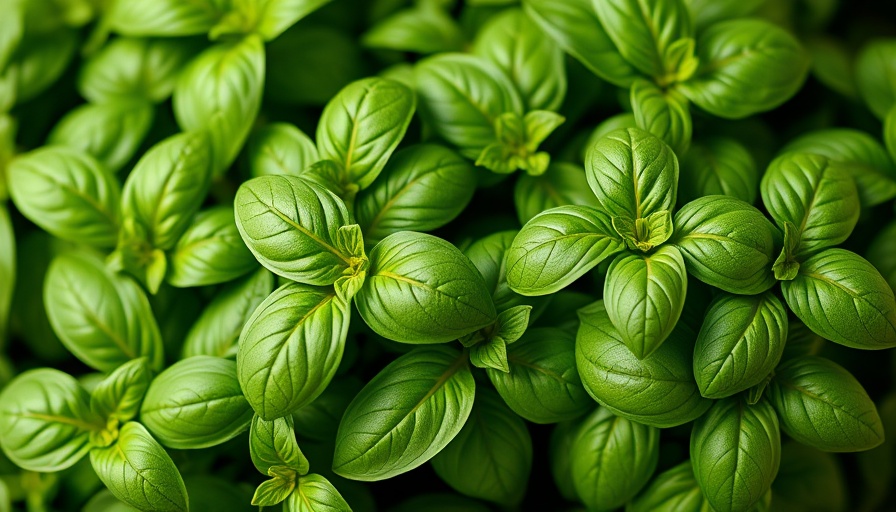
Unlock the Secrets of Growing Greek Basil: An Essential Guide
Greek basil, or Ocimum minimum, is not just a culinary delight but an attractive addition to any herb garden. Characterized by its compact size and aromatic leaves, this herb is perfect for indoor gardens and on-window pot arrangements. If you're looking to cultivate a spice that brings both taste and beauty to your home kitchen, Greek basil, also known as bush basil, is your best bet. This article distills essential tips and insights into successfully planting, caring for, and harvesting this delightful herb.
A Brief Background and Cultivation Insights
Greek basil has a rich history, cherished since ancient times for its culinary and medicinal properties. Native to regions spanning from Africa to Southeast Asia, it's a resilient plant that offers well-rounded flavor profiles, making it a staple in Mediterranean dishes. With its tender perennial nature, it thrives in USDA Hardiness Zones 9-11. Unlike its cousin, sweet basil, Greek basil features slightly smaller and sturdier leaves that lend themselves nicely to a variety of culinary uses.
Planting Greek Basil: Step-by-Step Guide
To achieve lush, thriving plants, it's essential to consider their growing environment. Here’s how to plant and nurture your Greek basil:
- Location: Select a site with full sun exposure for at least 6-8 hours daily. This plant flourishes in warm conditions and veggie patches.
- Soil Preparation: Ensure the soil is loose, humus-rich, and well-draining. Mixing perlite into regular potting soil will enhance drainage, crucial for avoiding root rot.
- Seed Planting: Sow seeds 1/4 inch deep, spacing them about 6 inches apart. Indoor planting is ideal from late winter, with outside transplantation following once the risk of frost has passed.
- Watering Needs: Greek basil thrives best with moderate watering. Allow the soil to dry slightly between watering sessions, generally yielding a schedule of every 5-7 days.
Harvesting and Utilizing Your Greek Basil
Timing is crucial when it comes to harvesting Greek basil. Begin to take leaves when plants reach 12 inches in height, ideally before flowering to ensure the best flavor. Regular harvesting promotes bushier growth, giving you a continuous supply throughout the growing season. Its versatile leaves can enhance everything from salads and sauces to unique desserts like basil ice cream.
Preventing Common Pitfalls in Greek Basil Care
Like all plants, Greek basil is susceptible to pests such as aphids and spider mites. Keeping a close eye on your plants, along with regular inspections, can prevent pest infestations. If pests are detected, safer organic options like neem oil may be effective. Additionally, deducting excess humidity from overwatering will help avoid root rot. Remember, Greek basil prefers friendly, sunny environments, making it essential to keep it hydrated but not soggy.
Creative Ways to Incorporate Greek Basil in Cooking
This aromatic herb holds a prominent role in various cuisines. Greek basil complements tomato-based dishes beautifully, adding a fresh twist to traditional Italian sauces or Mediterranean salads. For an adventurous culinary exploration, consider blending Greek basil into pesto or utilizing it in herbal-infused oils to elevate your cooking.
The Health Benefits of Greek Basil: More than Just Flavor
Beyond culinary joy, Greek basil possesses numerous health benefits, packed with antioxidants crucial for combating oxidative stress in the body. Ancient poetics aside, it’s often regarded as having digestive benefits, and is high in vitamins A and K. Its aromatic qualities are known to soothe stress and promote relaxation, making your herb garden not only a feast for the palate but a refuge for well-being.
Conclusion: Embrace the Joy of Gardening and Cooking
With the right knowledge and approach, growing Greek basil can be a joyful and rewarding experience. Whether you're a seasoned gardener or a novice starting with indoor plants, remember that every herb garden begins with a single seed. Consider adopting these tips for successful growing and enriching your meals with the flavorful addition of Greek basil. Dive into your gardening journey today!
 Add Row
Add Row  Add
Add 




Write A Comment